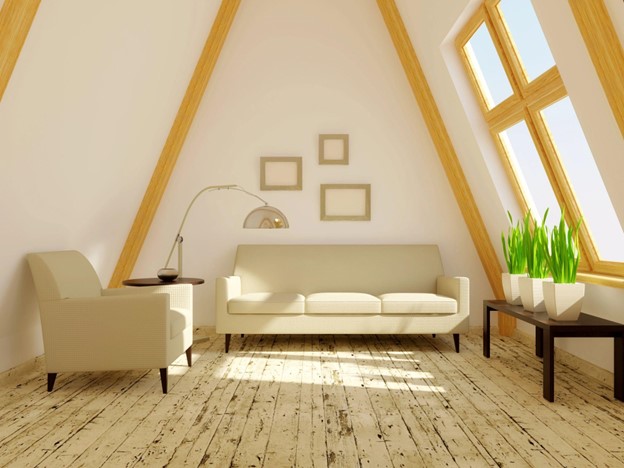The growing need for additional living spaces continues to significantly shape homeowners’ decisions in modern housing trends. Among the myriad of tactics aimed at meeting this demand, home extensions have proven to be an effective and highly popular solution. They don’t just offer homeowners the luxury of extra space and comfort, but also serve as a valuable asset enhancement tool, markedly increasing the financial worth of properties. Home extensions can take various shapes and forms, from a plush loft to a sun-drenched sunroom, all designed to meet individual homeowners’ unique preferences. Delve into this detailed analysis of leading trends in home extensions and how they spice up and maximise living spaces.
Why Extend Your Home?
The motivations for pursuing home extensions are manifold and customarily sought by homeowners who crave additional functional space. This craving is often satiated by converting disused lofts into useful spaces or erecting new rooms, which, interestingly, can inflate the overall value of a property. Consequently, this not only offers more living space but also makes commercial sense should homeowners decide to sell their properties.
Undeniably, one of the advantages of home extensions over relocating to a new home is that it is cost-effective. It provides an affordable route to acquiring the needed extra space without the added hassle and expense of moving to a new neighbourhood. Moreover, extensions offer homeowners, especially those with deep emotional ties to their abodes, the opportunity to transform their familiar spaces into a haven of comfort and functionality.
Types of Home Extensions and their Modern Interpretations
Home extensions exist in a variety of forms, with each one exhibiting its unique modern interpretation. The transformation of lofts, for instance, from mere storage spaces to functional rooms offering scenic views, shows the evolution of extensions. However, while they certainly can enhance homes with additional space and charm, they may be inappropriate for homes with restricted roof space.
One of the trending home extensions is sunrooms. Previously perceived as optional add-ons, sunrooms are now a desirable component of modern homes due to their unique blend of indoor comfort with an outdoor feel. The caveat here, however, is that they often require specific construction permissions, emphasising the importance of understanding local regulations when contemplating the most suitable extension for your home.
Top Trending Home Extension Styles in 2024
One of the headlining trends in home extension styles is the open-plan extension, a concept that’s perfect for planning a home extension that encourages seamless flow and connection. This style breaks down the barriers of isolated rooms, stitching up all living spaces into one interconnected area. While offering practical utility, it prioritises cultural aesthetics that bring an aura of homeliness and camaraderie, making it a popular choice for modern families.
Multi-storied extensions are another hot trend, gaining traction among homeowners due to their vertical designs, which help maximise limited ground or yard space. This style allows for the incorporation of multiple rooms without sacrificing outdoor areas, something that is widely appreciated by professionals in the field. Additionally, there is an ongoing fascination with glass box extensions, offering panoramic outside views that can transform your living space. However, planning around insulation and internal glare requires particular attention when adopting this striking style.
Sustainability and Energy-Efficiency – The New Extension Aesthetics
The global crescendo towards a greener Earth has heralded a new era in home extension designs. The new aesthetics see homeowners increasingly adopting sustainable practices and energy-efficient designs, reducing the environmental footprint of their homes while managing their utility costs. This has been achievable by utilising emerging green technologies, such as solar panels, thermal insulation, and low-energy lighting systems.
Utilising repurposed building materials, installing energy-efficient heating and cooling systems, and incorporating natural lighting and insulation are just a few of many ways homeowners can infuse these principles into their home extension designs.
How to Get Started with Your Home Extension?
Starting a home extension project can be quite daunting, particularly for homeowners who are making their first foray into such a venture. Before committing to an extension, several considerations come into play. These include understanding the potential uplift in property value, defining a realistic budget, and navigating the maze of potential planning permissions.
Starting with a comprehensive plan for the home extension should form the groundwork of this venture. Upon confirming the details of the plan, the next step will be to engage industry professionals such as builders, planners, and architects who can bring their expertise to bear on the project. It is imperative to keep an eye on common pitfalls such as under-budgeting, failure to consider how the extension will blend with the existing home layout, and neglecting the potential for future changes in family size and lifestyle.
Conclusion
Home extensions provide significant opportunities to transform and add new dimensions to living spaces. As societal needs evolve, home extension trends continue to respond to these demands by offering innovative solutions that straddle aesthetics, functionality, and environmental sustainability. By keeping abreast of these trends, homeowners can ensure their spaces are not just enjoyable, but also uphold environmental sustainability principles. This exploration should inspire homeowners to consider planning a home extension that can meet their current needs while accommodating future lifestyle changes. Indeed, home extensions offer more than just space; they offer a renewed sense of belonging and satisfaction.





